Cooking class in familiar atmosphere at the Royal Lanna Thai Cooking School in Chiang Mai
The word “royal” may now raise exaggerated expectations. I can tell you right away that the cooking class took place in a very private setting and in a totally relaxed atmosphere. If you are looking for “Cooking Class Chiang Mai”, you will find a lot of offers. One of the selection criteria for me, of course, was that there is the possibility to cook vegan.
What do I have to do to attend a cooking class in Chiang Mai?
Let’s see how the registration is done and how the cooking class in Chiang Mai runs. And then, of course, comes the most important. What dishes did we learn at the Royal Lanna Thai Cooking School?
Registration
In our case, the registration took place via the booking platform Cookly*. Here you can find cooking classes all over the world and book them right away. I find the site very convenient as you do not have to search through countless individual pages of cooking schools, but have everything in one place. You can filter to a certain extent and create a watch list. In the search result, you can see at first glance the price, the start time(s), the duration, when the next course takes place and a short description. With a mouse click you get more information about the courses that interest you.
By the way, you can find the direct link to the Royal Lanna Thai Cooking School here*. If you want to see more photos and updates, you can go to their Facebook page (Link in info box below). There are currently (as of 11/2019) two courses offered daily except Fridays. In the morning class you have the advantage that the market is even more busy and you probably do not need to eat anything for the rest of the day.
You simply select the desired available date and indicate the number of people. In the next step, you can specify where you would like to be picked up and if there is any dietary restriction to be considered (vegan, vegetarian, gluten-free…). The cooking class at the Royal Lanna Thai Cooking School currently costs 28 EUR / 31 USD and includes everything between pick up and return.
Course of action
The cooking school will let you know by e-mail when you are about to be picked up. That worked out wonderfully. We were a total of 5 students, so a nice little group. Next to José and me, a couple from New York and a Japanese lady participated.
After all students (maximum 8) are collected, it goes straight to the market. We visited the Tha-nin market north of the old town of Chiang Mai. A large market with all the food you need for Thai food. Even without a cooking class worth a visit. Here you can, for example, stock up on fruit. For many things, the prices are displayed, as you can see on a photo at the top. But sometimes you will have to bargain for the price. Incidentally, the prices in Thailand are generally per kilogram the same as in Europe.We bought vegetables, fruits, tofu and meat for the cooking class. Similar to “Suppengrün” (greens) in Germany and Austria, lemongrass, lime leaves and whatever else you need for a soup (for example Tom Yam) are sold in bundles in Thailand. That’s what our teacher Song is explaining on the photo right above.
The cooking school
After the market, we went immediately to the house where the cooking school is located. In hindsight during the research, I found it confusing that you can not find anything under Royal Lanna Thai Cooking School on Google Maps. Apparently, the cooking school was found under the name Lanna Cookery House before. This is also what you can read on the cookbook which we received at the end of the course. But don’t let this unsettle you, because you will be picked up at your accommodation anyway and taken to the course location. Below on the map I have marked the place where the course took place.The house where the cooking class takes place is an oasis of peace. There’s a Zen Spa and massage in the same building. The dining table is located right in the entrance area. Next to it, a short walk leads to the room where we did all the snipping work. The interior is air conditioned.
The cooking takes place in a covered outdoor area of the house. Here are several gas flames available. Some preparatory work is done by diligent helpers, who also did the washing up for us. This makes cooking really fun and you can concentrate on the preparation. Right at the beginning we made coconut milk, which we later used for the soups as well as the curries and desserts. It’s actually quite simple: grate the flesh of an old coconut, pour warm water over the grated coconut and knead well with your hands. Then everything is tipped into a sieve and the pulp is squeezed out well again. Finished.What did we cook?
Now we get to the individual dishes that we have learned to prepare. There were two dishes per course to choose from. So we could see both dishes, we tried to split them up between everyone.
Spring Rolls
You have probably eaten spring rolls many times, but have you ever made them yourself? It’s very easy. Well, we did not do the dough ourselves. But the stuffing, the winding and finally the frying.The ingredients for the filling can of course be varied. For vegetarians and vegans you can take tofu, for meat eaters there’s chicken or minced meat to choose from. The basic ingredients for the Thai style spring rolls you can see in the photo at the side. Glass noodles are the most important thing which I am sure you will get in every Asian supermarket in Europe. The filling is pre-cooked in the wok, since the rolls are only fried very briefly on both sides in hot oil until they are golden brown.
So that the roles do not fall apart you need some kind of glue. This can be egg or for vegans tapioca or corn starch. You cover the dough surfaces that should stick together with it.
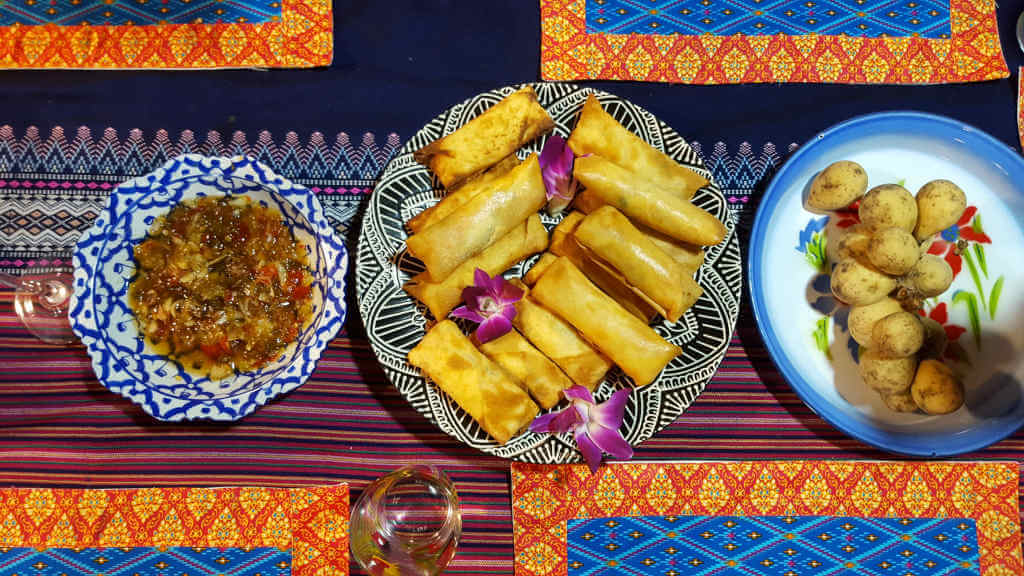
The soups: Tom Kha and Tom Yam
Many of the ingredients of the two soups are the same. Such as the already mentioned “greens” or coconut milk and fish sauce (for vegans soy sauce). The biggest difference is that Tom Yam still contains red curry paste, which also creates the typical reddish color of the soup.
You can be creative with the other ingredients. Depending on your preference, both soups can be vegetarianized. For this we used mushrooms and tofu, for example. Since the region around Chiang Mai is far from the sea, for a meat version they traditionally use chicken. In our case, Tom Kha became a Tom Kha Gai (Gai = chicken) for the meat eaters, and the Tom Yam Goong is made with shrimp. The latter is also found very frequently on menus all over Thailand in this form.In the photo at the side you can see a lot of the ingredients (lemongrass, mushrooms, tomatoes, chilli, spring onion, fish sauce, tamarind sauce and lime juice) and a trick to get the juice of a lime slice pinpoint in a small vessel. Simply squeeze it over the back of a knife and hold the knife tip over the container.

Pad Thai und Pad See Ew
These are pasta dishes, with Pad Thai certainly being one of the best known Thai dishes. In Thailand you get it on every street corner.
I did not know Pad See Ew yet and decided to go for it. Very broad rice noodles are used in this dish. The list of other ingredients is short. Garlic, onion (instead of the small Thai one you can take shallots in Europe), carrots, Chinese broccoli and some sauces (light soy sauce, dark soy sauce, optional fish sauce), sugar and optional an egg and tofu or shrimp.
In principle, everything is cooked in order in the wok until no more liquid is left and then served.

Massaman and Green Curry
These two curries differ basically by the curry paste used. This we have made in advance in the mortar and the result you can see in the following two pictures. Using the mortar is quite exhausting, but I can only say, the effort is worth it.
The curry pastes are also the main difference between the two curries. Besides that for the green we have taken Thai eggplant and in the Massaman potatoes came in as well as a cinnamon stick and cardamom. Important common ingredients are coconut milk and tamarind paste. Of course, tofu, chicken, tempeh or seafood can be added at will as ingredients. So we took golden tofu for the vegan green curry and chicken meat in the Massaman Curry.
And here is the result.
Desserts: mango sticky rice and banana in coconut milk
You’re probably thinking, that was a lot to eat. But a little something is still possible. Especially when it comes to a sweet conclusion. Admittedly, we have not eaten everything. But anyone can take something home in a doggy bag.
Mango sticky rice is one of the most popular desserts in Thailand and can be found in practically every Thai restaurant and as street food on the street. It consists of three ingredients: mango, sticky rice and coconut cream (ie slightly thicker than the milk). For the sticky rice, it is best to soak the special rice in water overnight. It is then steamed for 20 minutes. Finished. In order to obtain this special form with the mango, which you can see in the following picture, it is halved at first. Then you cut the pulp longitudinally and transversely down to the skin and then arch the pulp to the outside.
The banana in coconut milk is even easier. For this, cut the banana into pieces (we used the small Thai ones) in water, coconut milk, sugar and a pandan leaf. I have never heard the latter before and I am not sure if it will be available in Europe.
Both desserts are simple and delicious.
Conclusion
We all enjoyed the cooking class and thought we had the best thaifood here in Thailand during our entire visit. The course is very well organized. Registration was also possible at short notice (the evening before) and we were picked up on time. The market visit was great. On our own we would never have found the way there. Song, our cooking teacher, lovingly looked after us and answered all our questions. The two helpers in the background made our work a lot easier. Without their help, preparing so many courses in just 4 hours would not have been possible. There was never a rush or pressure to get finished with anything quickly.
In order to make it easier for the course and to make it a little more diversified for the course instructors, we were only offered two dishes per course. For this we got a paper in the car on the way to the market on which we could tick our desired dishes. If you want to learn a special dish that is offered on the registration page, you should note that in the comments field during the registration process. Then I’m sure that they will respond to your request.

You want to read more about cooking classes? Take a look at my report on a cooking class in Bali and read the article about a vegan baking class in Berlin!
Info Royal Lanna Thai Cooking School
Address: 6/1 Taewarit Road, Chang Phuak, Chiangmai. 50300
Phone: +66-84-329-4631
E-mail: lannacookingclass@gmail.com
Booking platform: Cookly*
Booking: Royal Lanna Thai Cooking School*
You are currently viewing a placeholder content from Google Maps. To access the actual content, click the button below. Please note that doing so will share data with third-party providers.
More InformationYOU WANT TO BE INFORMED ABOUT NEW BLOG POSTS AND CURRENT FOOD EVENTS? SIGN UP FOR THE NEWSLETTER!
The links marked with an * are so-called affiliate links. If you buy something through these links, I get a small commission from the provider. It makes no difference to you in terms of price. So you can support me easily and free of charge.

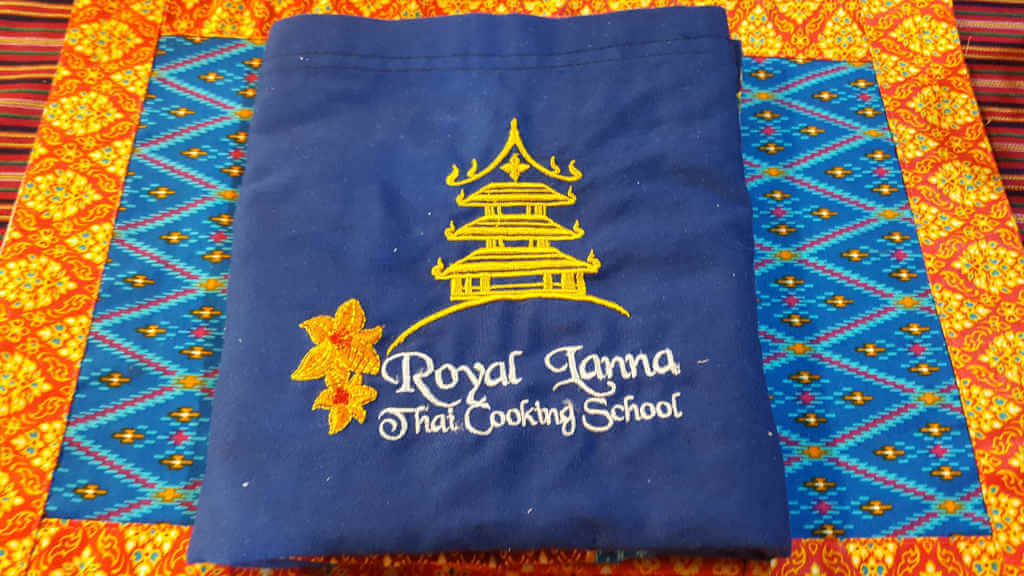
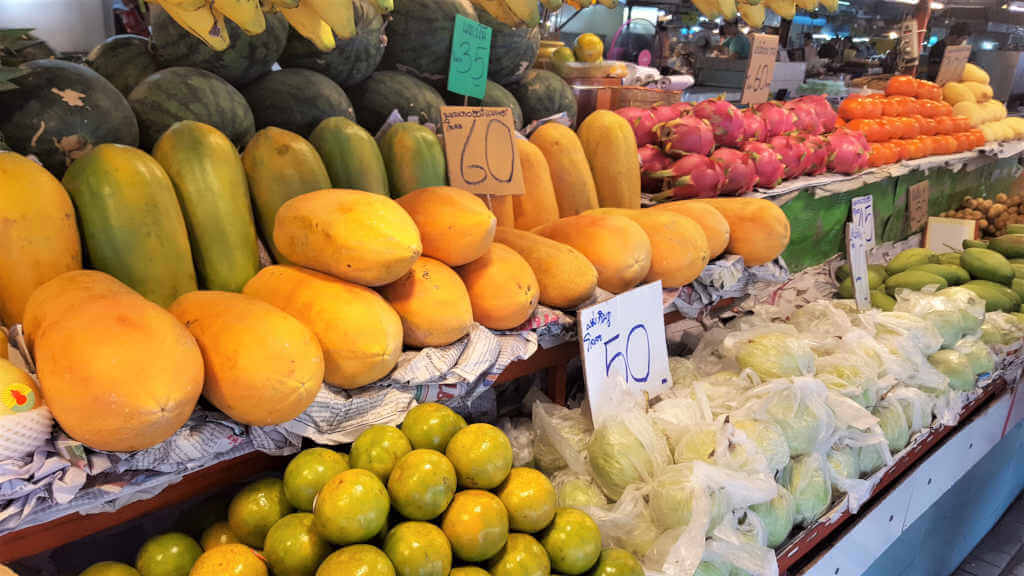

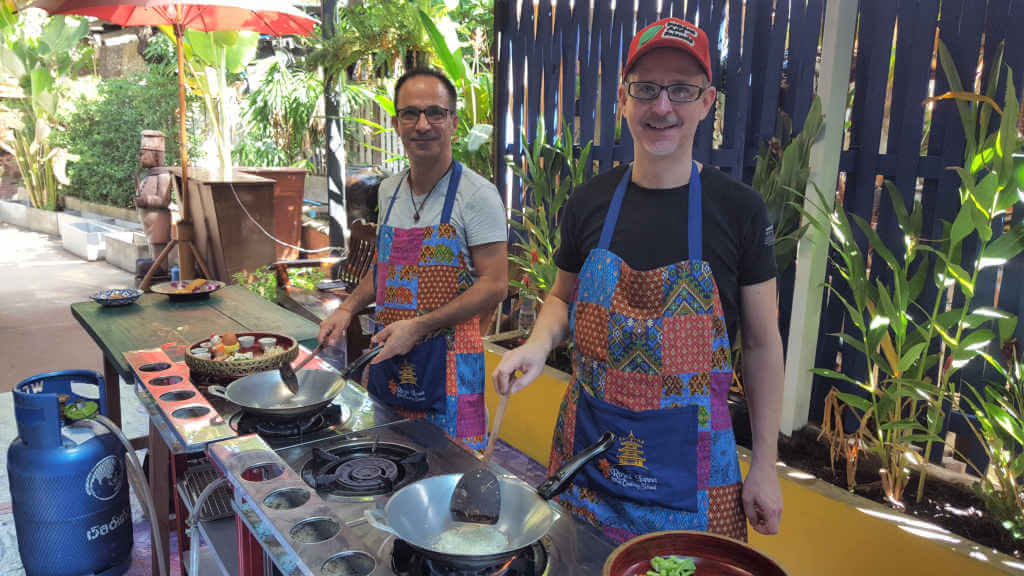

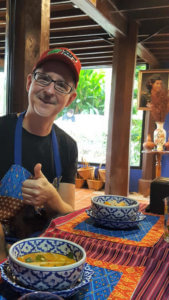


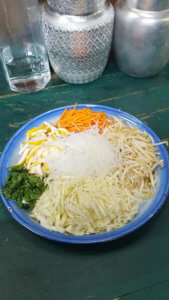

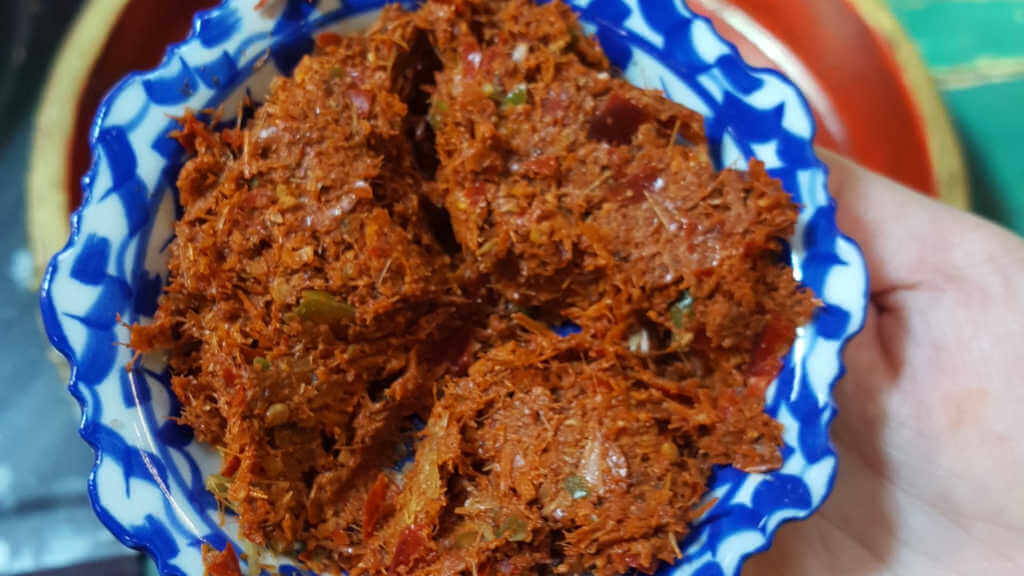
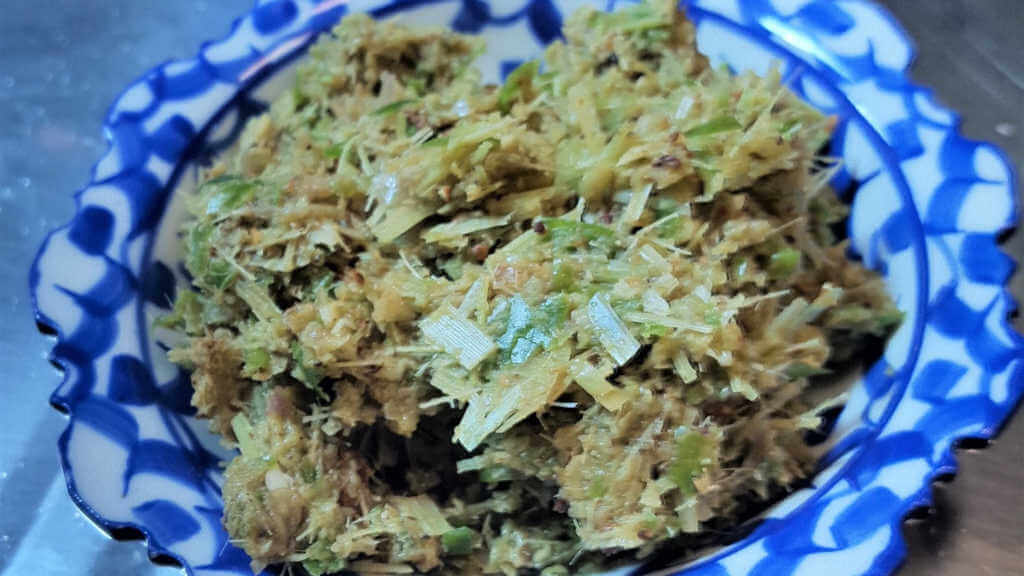

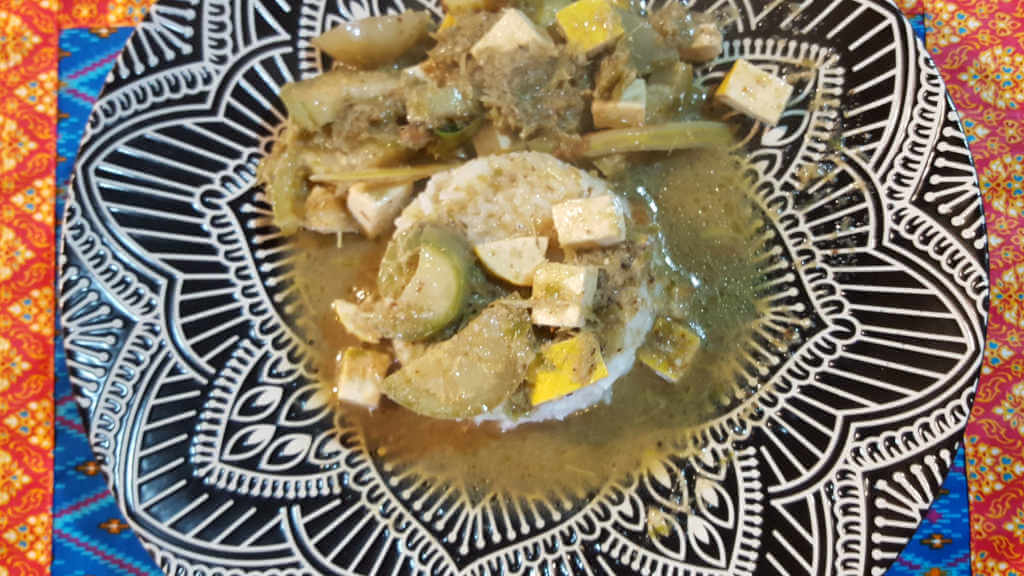
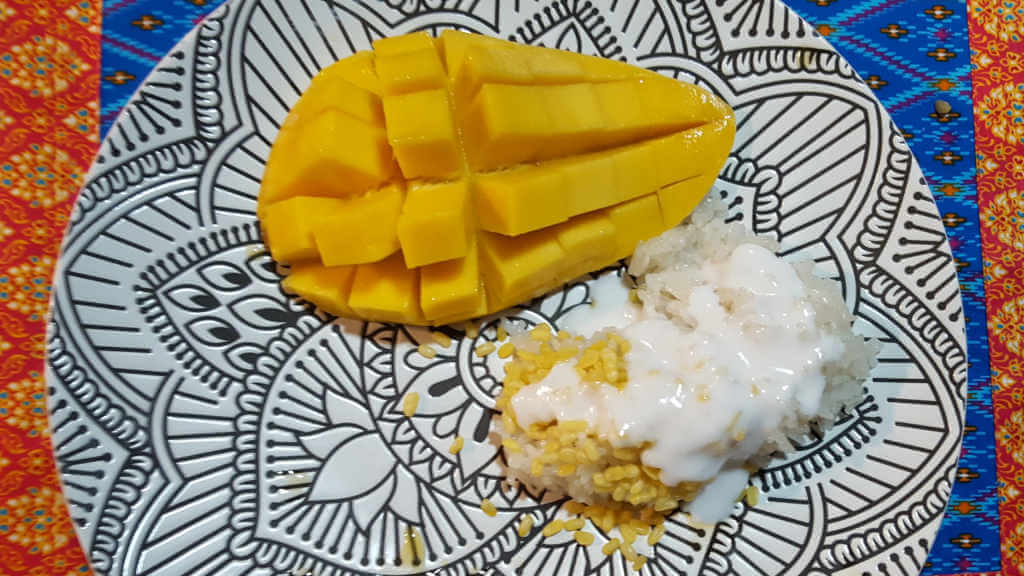
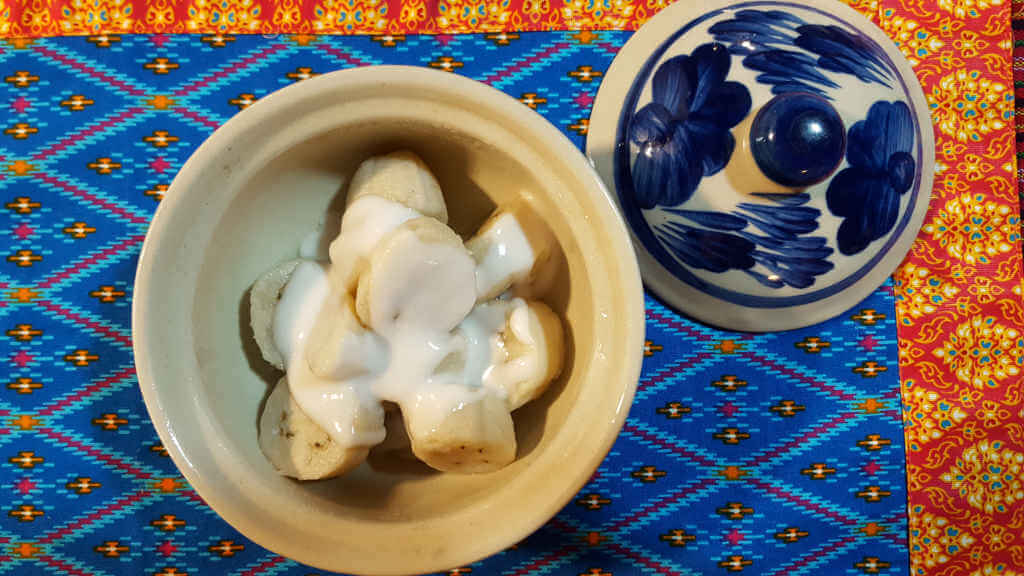
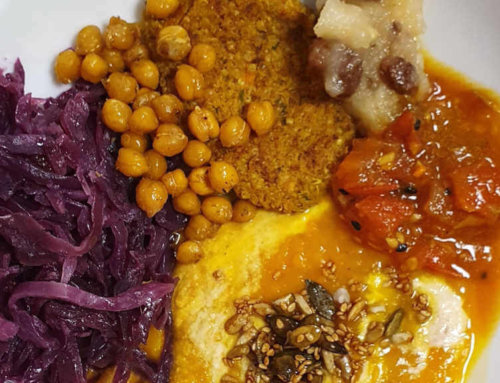
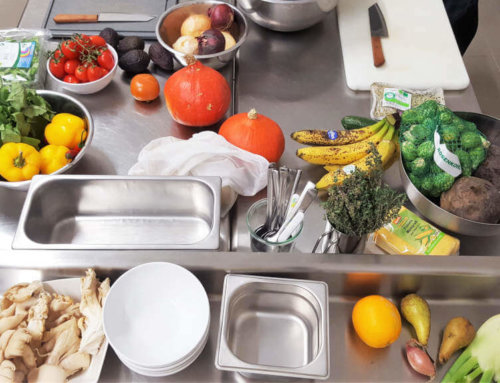
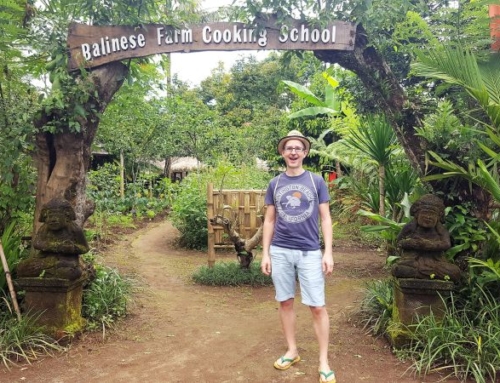
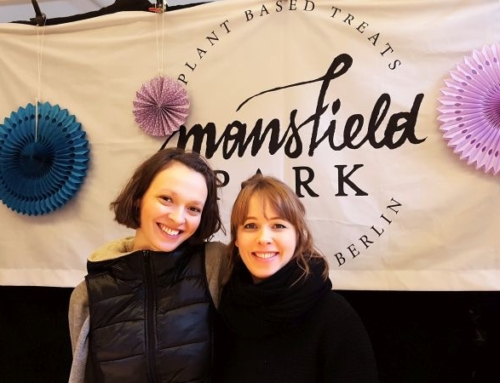
[…] I really like Asian food, and I also did a cooking course in Thailand. You can read more about this here. That’s why I can judge to some extent how good and authentic Thai cuisine […]